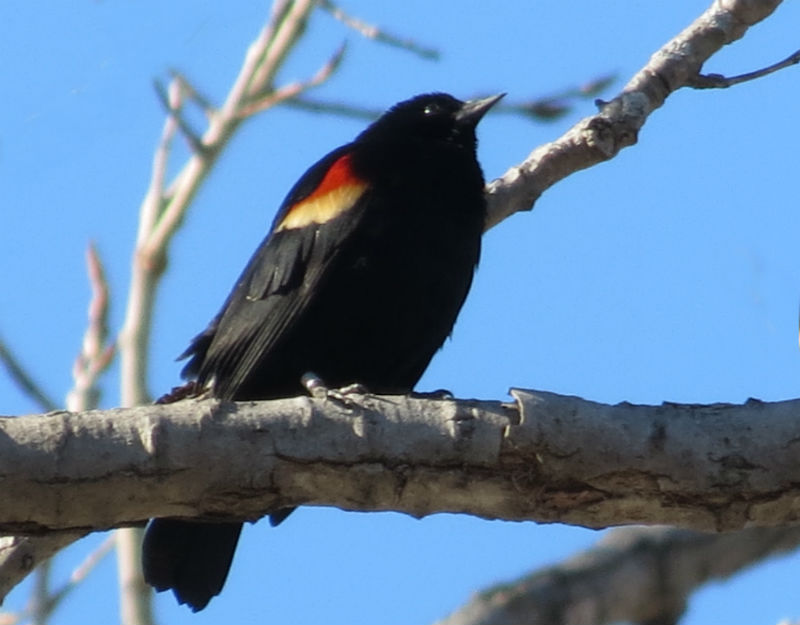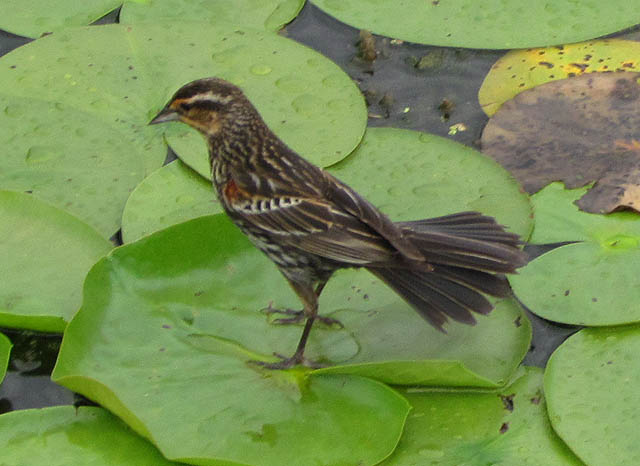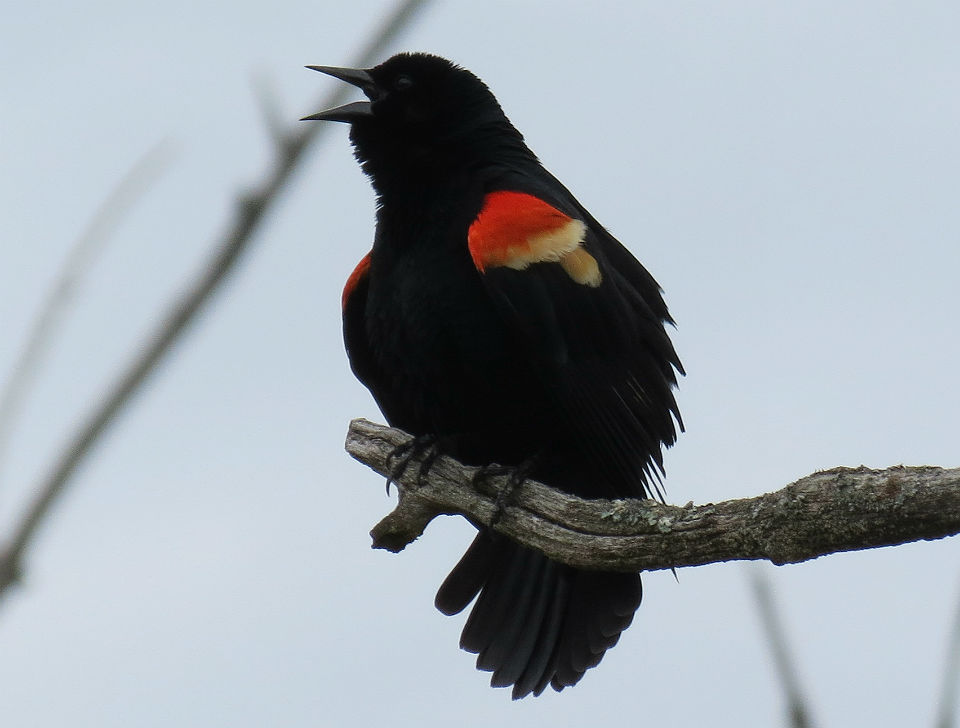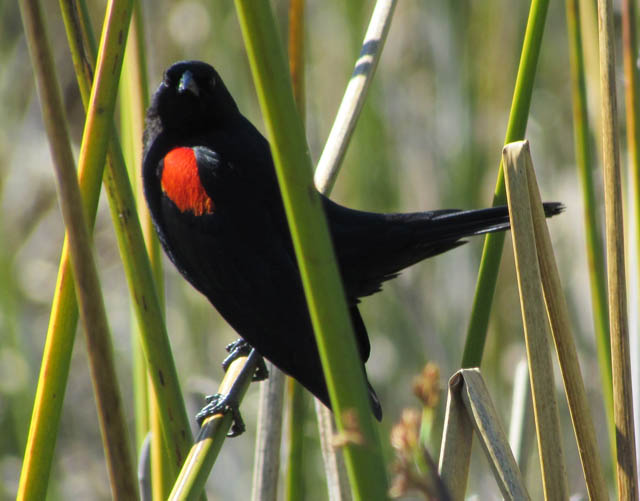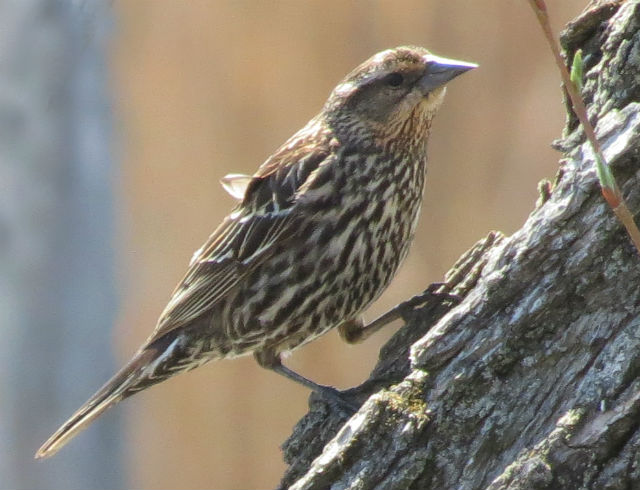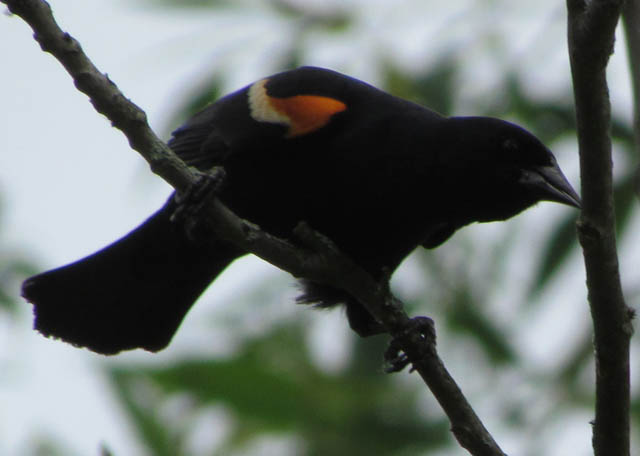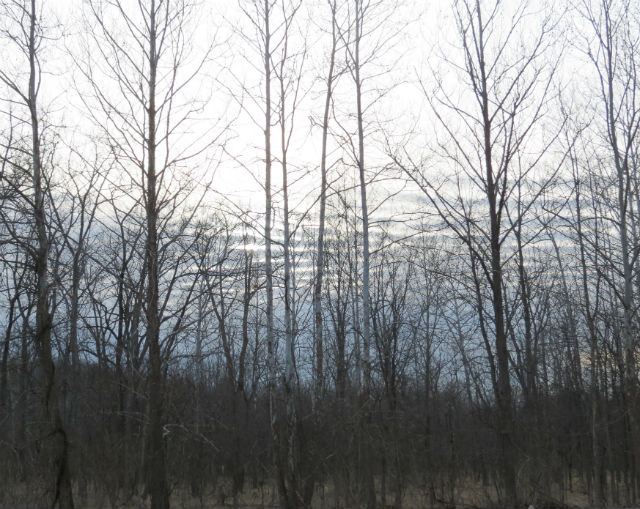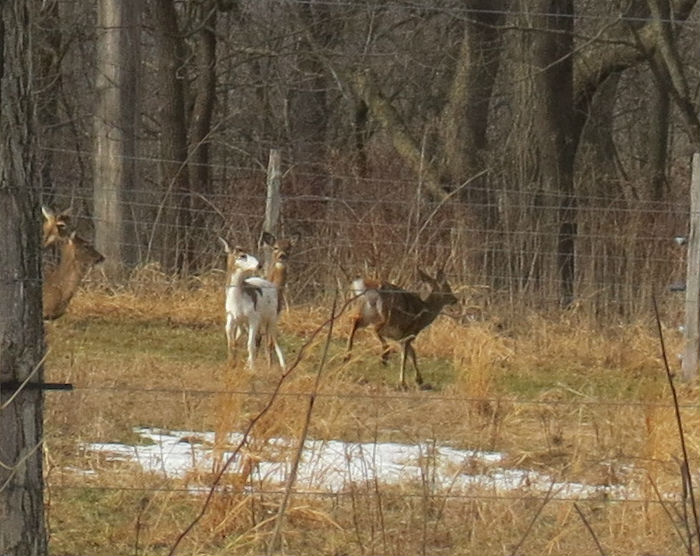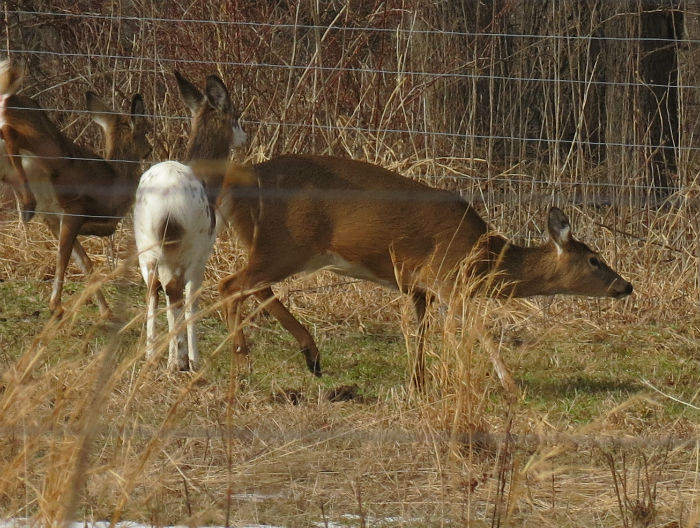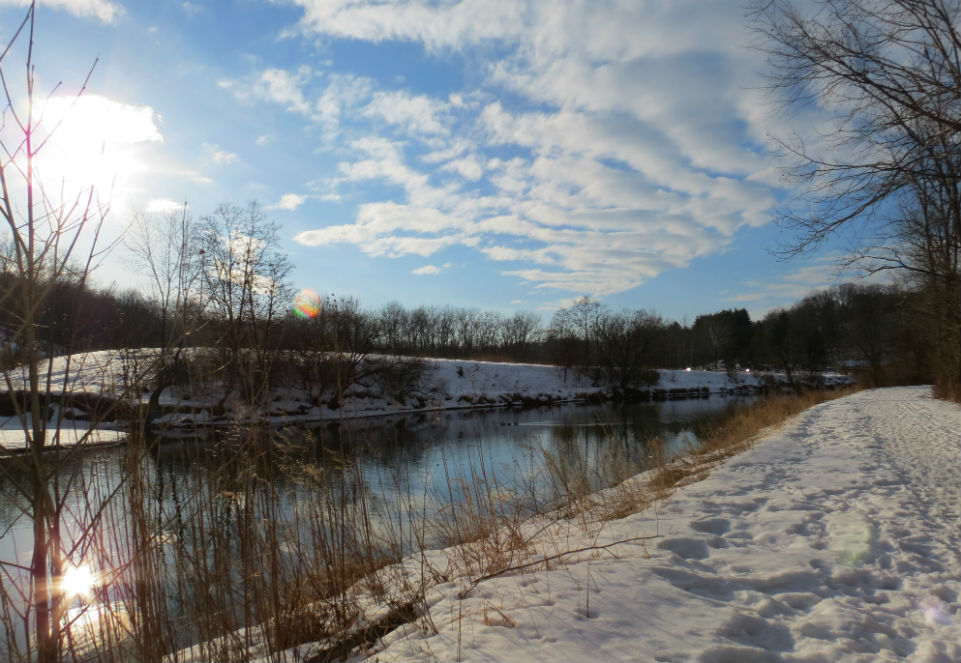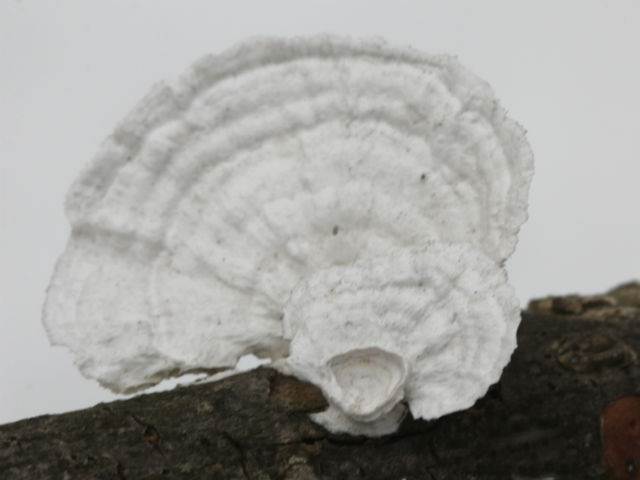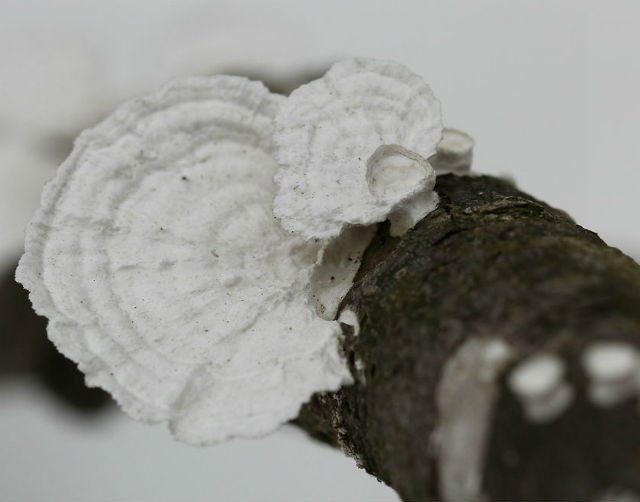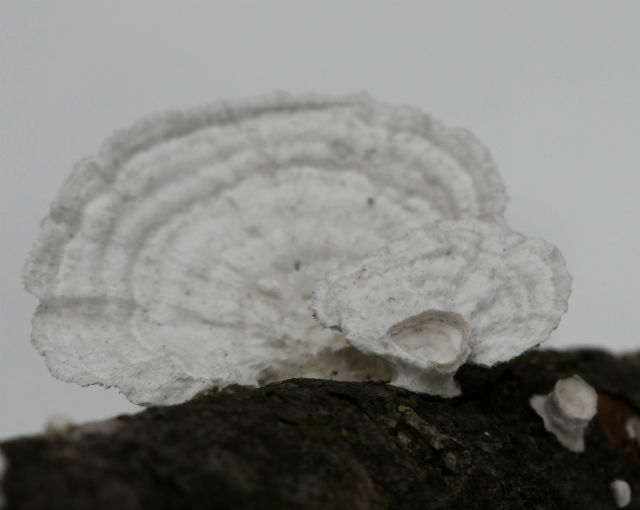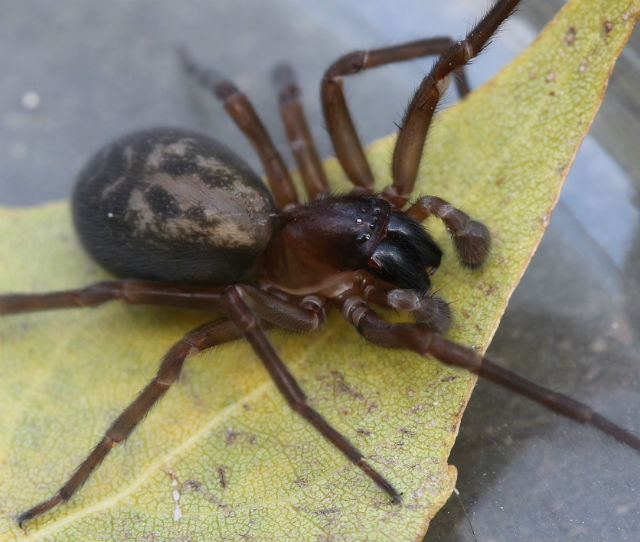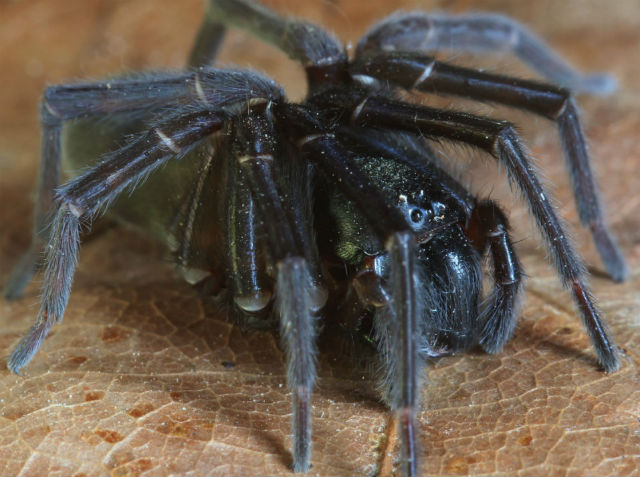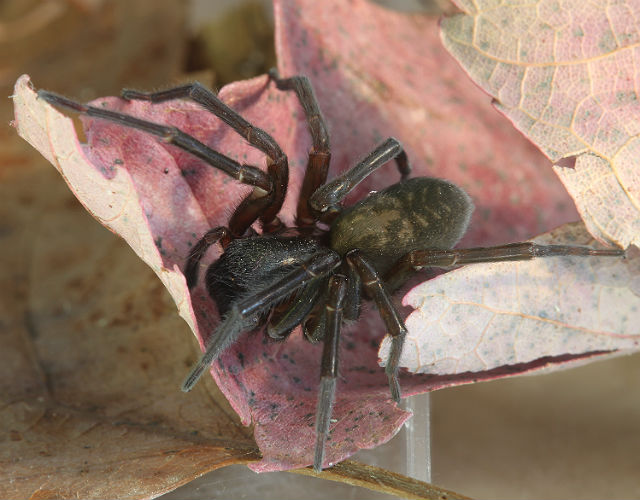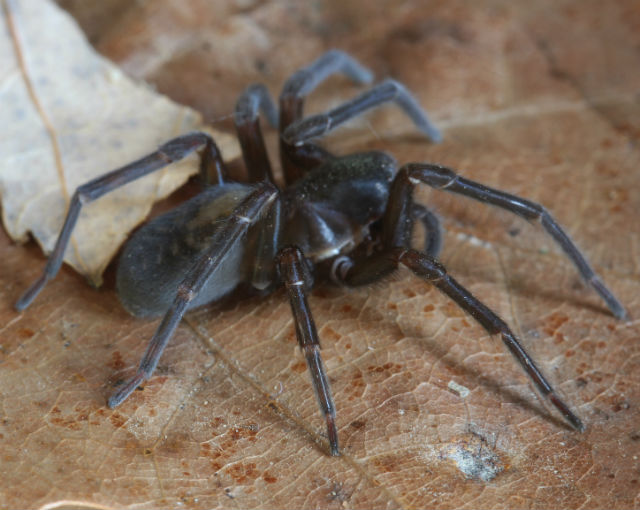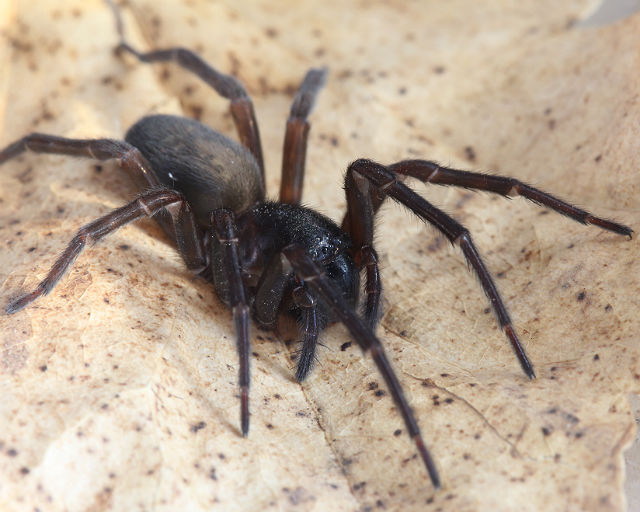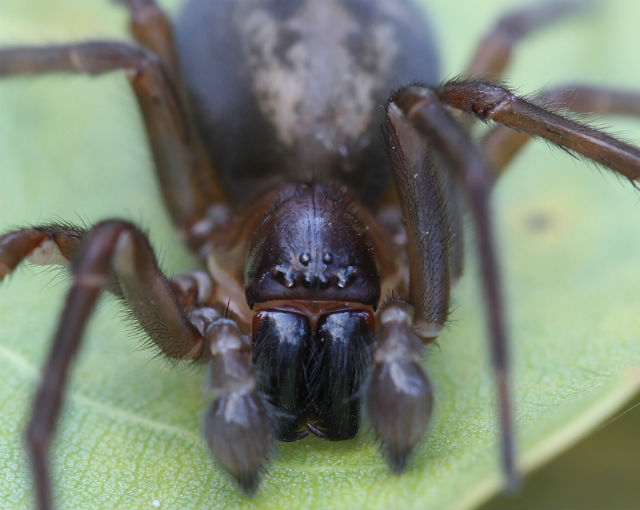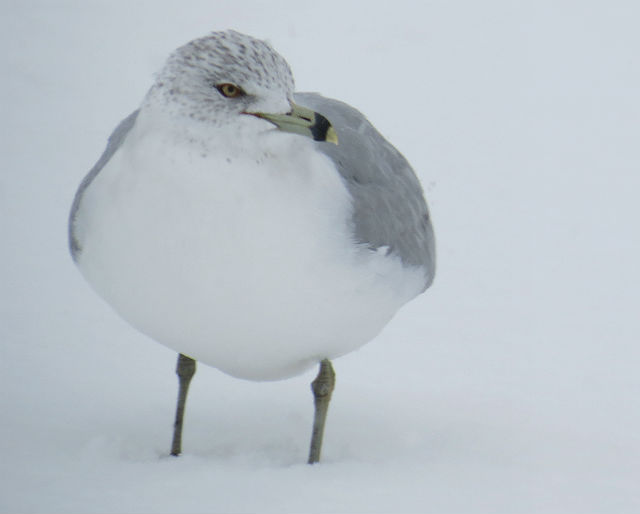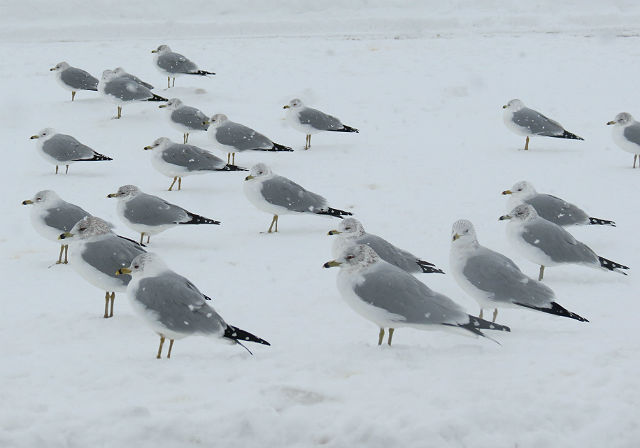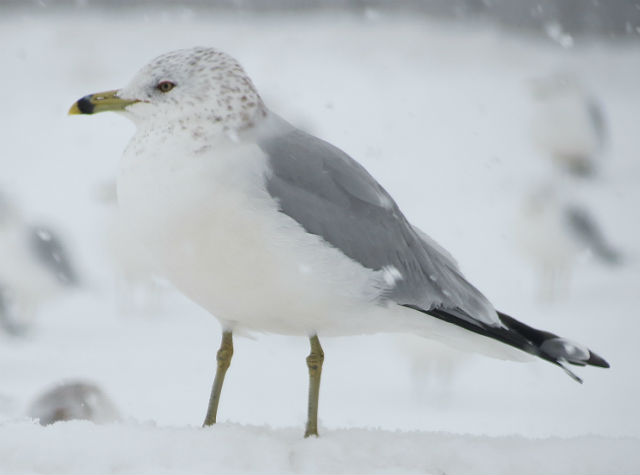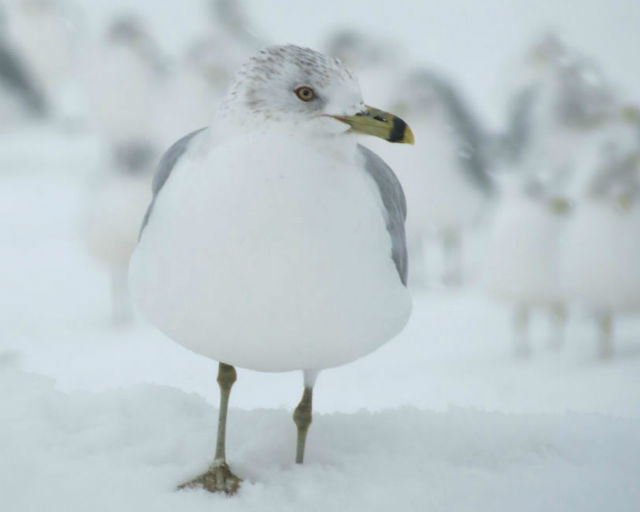One of the most abundant birds across North America, and one of the most boldly colored, the Red-winged Blackbird is a familiar sight atop cattails and around areas with water.
Glossy-black males have scarlet-and-yellow shoulder patches. Females are a subdued, streaky brown, looking like a large, dark sparrow.
In the North, their arrival and tumbling song are indications of the return of Spring.
There’s variation in Red-winged Blackbirds across the country. The most obvious race is the “bicolored blackbird” of coastal California, which shows no yellow border on its shoulders. Here’s one that I saw in April of last year.
Red-winged Blackbirds are highly social and form flocks all year, though during spring and summer the flocks are small.
This is one of the most easily observable birds. Watching them is fascinating and fun. You’ll never be bored trying to figure out all of their quirks and songs.


